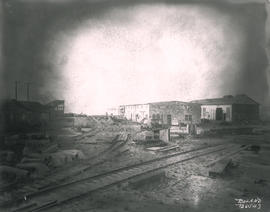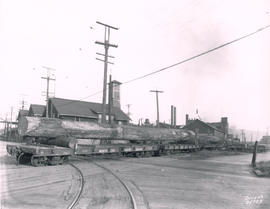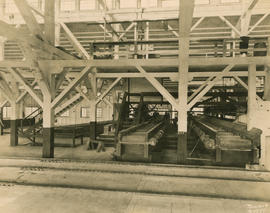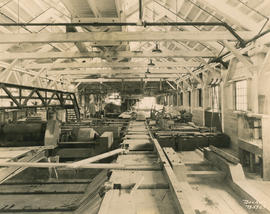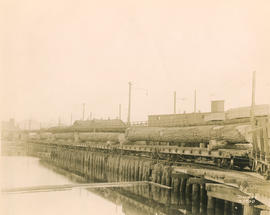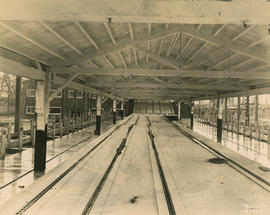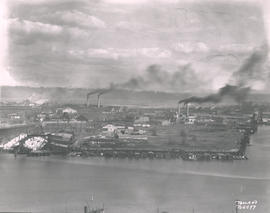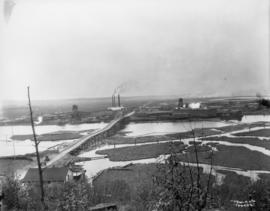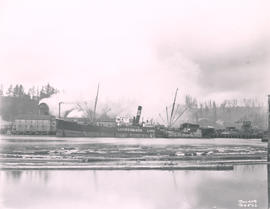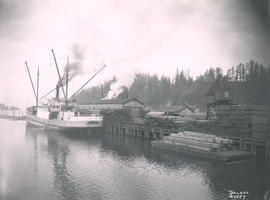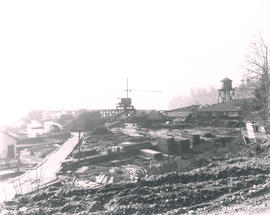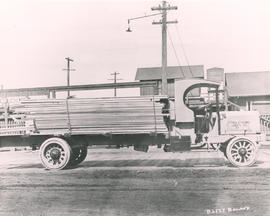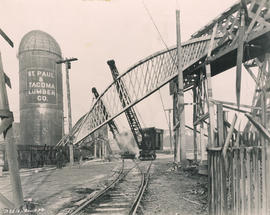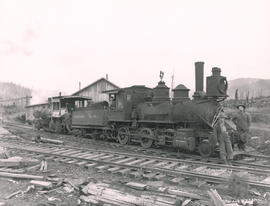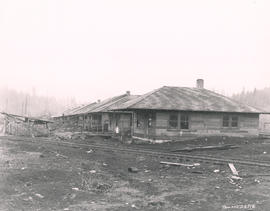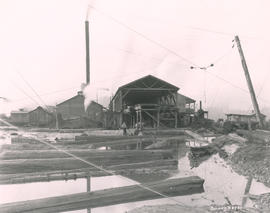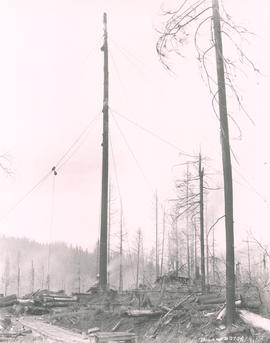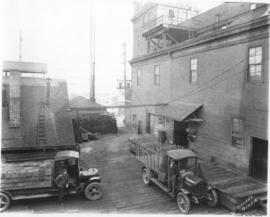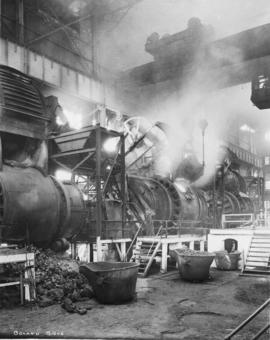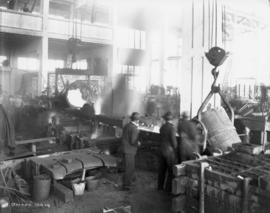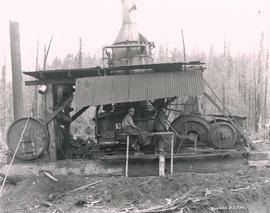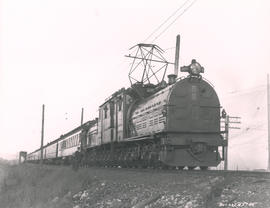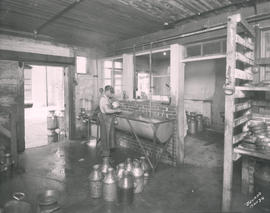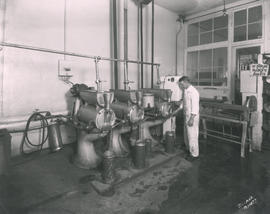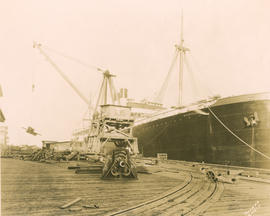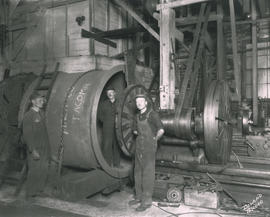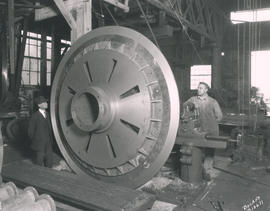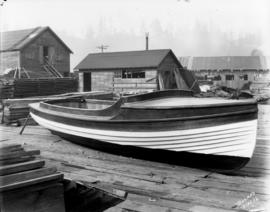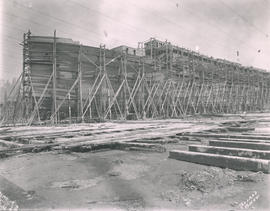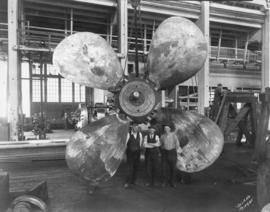The SS Bienville. The 445-foot Bienville had been launched at Todd Dry Dock facilities on July 16, 1924, and four months later, was nearly ready to be delivered to her owners in New York. A crane, in the process of lifting, is on the dock next to the ship. The Bienville would conduct short ship trials on November 17th and then be moved to the Port of Tacoma piers on November 19th to load initial cargo after her trial run. Over 2500 tons of goods, including machinery, 2000+ tons of hay and a large number of canned goods, will be stored aboard. The Bienville fell victim to fire in mid-March of 1925 while undergoing repairs in New Orleans and was severely damaged. G49.174 (TNT 11-12-24, p. 1-article; TNT 11-14-24, p. 1-article TNT 3-19-25, p. 1-article on fire; TDL 3-28-25, p. 1-article on fire)
Boat & ship industry--Tacoma--1920-1930; Boats--Tacoma--1920-1930; Hoisting machinery;
